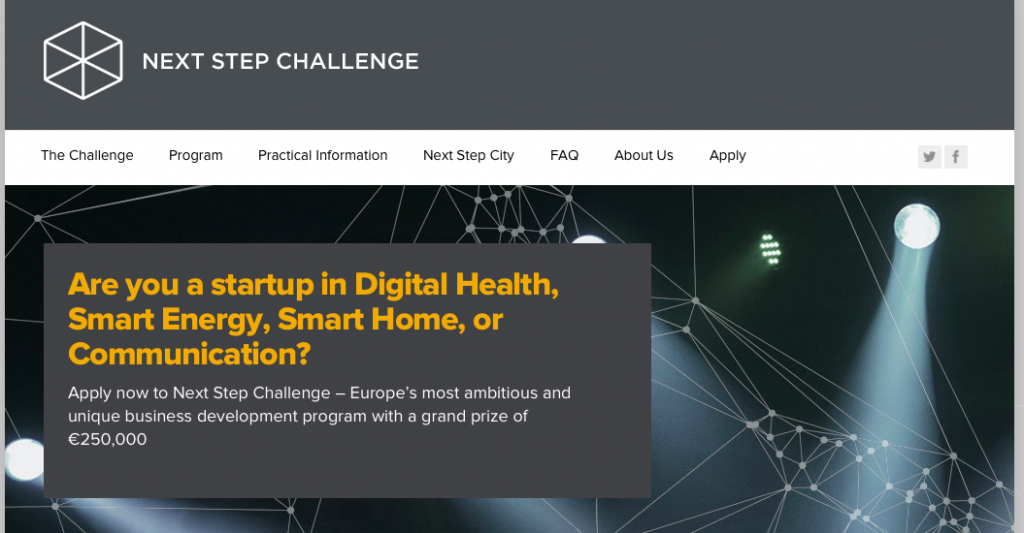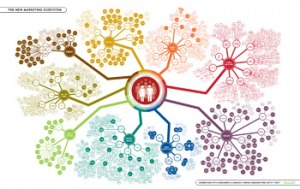 Off-late, I have been seeing many articles on “Funded” V/S “Bootstrapped” models. Few articles have projected bootstrapped ventures as great in comparison to funded ones. I run a company that is profitable without any external funding and at times find it very odd with these sorts of comparisons. Many entrepreneur friends suggest me to continue the way we are and ask me to stay away from investors as they feel it is great to bootstrap a venture.
Off-late, I have been seeing many articles on “Funded” V/S “Bootstrapped” models. Few articles have projected bootstrapped ventures as great in comparison to funded ones. I run a company that is profitable without any external funding and at times find it very odd with these sorts of comparisons. Many entrepreneur friends suggest me to continue the way we are and ask me to stay away from investors as they feel it is great to bootstrap a venture.
To me it is a factor driven by who you are, what you want to do and what your business demands. Every business needs resources (which are unique to that business) to build the business and run it. Hence the capital needs are different for each business.
I categories companies into three types
- Self-funded
- Customer Funded
- Investor Funded
Please note all of these are funded! Someone is funding them and that is universal.
[#NiceProduct]
We are a blend of Self-Funded and Customer Funded. Back in 2008 we started building a-ipas, a product that targets large manufacturing plants as its customers. We got exposed to an interesting problem faced by manufacturing plants where-in the ERP implemented by the company was the bottle-neck in the Manufacturing plant. The workers/operators found it hard to work with the ERP System. The ERP system was not mobile (Then) and hence the operators had to go to a computer and perform these tasks. The factory had ERP Operators sitting all day and performing the transactions as and when the workers approached them with a paper/job! Being an entrepreneur, I saw an opportunity to build something that could solve a real world problem, so negotiated with my wife, who is a software engineer to let go of her job and take up the task of developing a solution that can address these challenges. With no liabilities on our shoulders, it was an easy decision for us to risk some cash for the joy of developing a solution that would solve a real problem.
[#Start]
No business plan, no “Mission” / “Vision” statements, we started working from our rented house’s garage. Savita worked solo, with some support (mostly cooking and cleaning) from my side. We build a base version of the solution in about 4 months and offered it to the factory which we knew had this problem. As we had no identity or brand value, we had zero expectations. Lucky for us, the IT manager of the factory took interest in the solution and deployed it in the factory. He also helped us make it more effective for the worker. For him, he was getting a custom solution at a very low cost. For us we were building something that was solving a real problem. With this ideal win-win scenario, we ventured out to build an Enterprise class solution for a niche market segment with zero plan and support from outside.
Apart from Savita’s lost salary and small money we paid a couple of trainees, we had no major costs initially. We kept our focus on the solution and our goal was to make the factory workers life better and make factory a better place to work. The critical part of this journey was the partnership with the factory & their teams. They were working with us like “Product managers”, driving the requirements. We took each and every need of theirs very seriously and starting putting features into our solution. We licensed our solution to one factory and made enough money to lead a normal life. We had revenue from other business to keep us happy. Contrary to theory, we did not expand our business for a long time. We wanted to perfect our solution. Growth meant dilution in quality and delivery. So, we opted to keep low profile and continued adding features/modules to one single factory for four long years. We could have taken VC money after our initial success and grow rapidly. However, the product we were building requires deep understanding of the manufacturing domain. It required evolution of a solution and with VC money on your back, slow growth could eventually kill the business. So we opted not to go for any external investment and hence we ended up as “Self-Funded + Customer Funded”. Just to reiterate, bootstrapping was part of the need and choice.
So to say, the product development was done with significant investment of our time and energy. To keep our operating costs low, we always picked fresh engineers and invested lot of time and effort to train them. To make our product robust, we needed experts from a lot of other domains for which we developed a network of experts who worked during after office hours. Net-Net, we innovated in ways to develop bleeding edge solution using low cost resources and all the possible support from the Eco-system.
[#Growth]
Early 2014 we assessed that our solution was mature and can be scaled up. We started expanding to other geographies. Today we have Six factories globally using our solution with one factory being the world’s largest adhesive manufacturing plant. We are competing with multi-billion dollar software gains and at times are luck to steal a deal just below their noses. We have moved out of a garage to an office that can accommodate more than 40 engineers. We have 22 full time engineers working on the solution and have a branch at Singapore and two engineers at China. More than 15 Experts work with us on a need basis. We have not yet taken any external funding and are profitable.
Is it good to continue the way we are? Should we take investment? Why? Why not? are question we regularly brainstorm. We believe external funding would help us accelerate our growth. While customer funded business model helps us grow organically, an investor funded catalyst would push us to faster gear. We have just started talking to investors. There is interest but there are other challenges we have to deal with. Having bootstrapped, we are conservative with money. We are asking small money and have reasonable revenue on board. This causes confusion amongst investors. We are hopeful of closing our first round very soon. If the cost of capital is much more than what we are willing to pay, we can afford to go much longer without external funds. In event we go ahead without funding, please note that we are not continuing bootstrapping because we think it is great way to build business. It is just that we are not yet ready for funding OR have no right options of funding!
The big benefit of self-funded & customer funded businesses is their ability to do what is right for the business with long term view. They would have more flexibility and agility to deal with market dynamics. They carry risk of starvation but are generally better prepared to handle the drought conditions. On an exit, the founders tend to have much larger pie at much lower valuations. If we exit at $10M today, we would be making similar gains like what RedBus founders gained at $100M Exit. Conclusion, no model is right or wrong. No model is great or otherwise! It is your business and it is for you to define the right way to build it and execute it. We chose the self-funded route + customer funded route, because we could afford it and was the right thing for the business then.
Guest Post by Subramanyam Kasibhat, Founder & CEO Aureole Technologies




 Many of us lead our lives with bags of things that we believe impossible to achieve – spoons that we cannot bend. The spoon may be the aspiration to be an Olympic athlete, climb Mt Everest, run for the president’s office, or as common as a resolution to resist the urge to overeat, read a book every moth, blog regularly or make time to connect with old friends. We are often limited by our own ambition and tenacity. There is no such thing as an unattainable goal. The trick is to realize that the constraints that limit us from realizing our full potential may only exist in our mind.
Many of us lead our lives with bags of things that we believe impossible to achieve – spoons that we cannot bend. The spoon may be the aspiration to be an Olympic athlete, climb Mt Everest, run for the president’s office, or as common as a resolution to resist the urge to overeat, read a book every moth, blog regularly or make time to connect with old friends. We are often limited by our own ambition and tenacity. There is no such thing as an unattainable goal. The trick is to realize that the constraints that limit us from realizing our full potential may only exist in our mind. Let me illustrate the point with the narrative that I heard from the man himself –
Let me illustrate the point with the narrative that I heard from the man himself –  We get into these FUDs(fears, uncertainties, doubts) because whenever you ask for money, there is friction, which cannot be removed, it can only be minimized. The best way to overcome these objections is to prevent them from happening. Well, I tried to study, how other people, were addressing the same problem, and tried to come up with one for my own product. Its taken more than 6 months, and hours of brainstorming with few of the amazing folks for me to reach here. I will try and summarize few of them.
We get into these FUDs(fears, uncertainties, doubts) because whenever you ask for money, there is friction, which cannot be removed, it can only be minimized. The best way to overcome these objections is to prevent them from happening. Well, I tried to study, how other people, were addressing the same problem, and tried to come up with one for my own product. Its taken more than 6 months, and hours of brainstorming with few of the amazing folks for me to reach here. I will try and summarize few of them.
 Start Tel Aviv from September 14th to 19th 2014 is an International competition in the framework of which startups from different countries will compete for the opportunity of a 5 day intense startup experience to learn from the startup ecosystem in Tel Aviv. The prize is a paid trip where the 13 startup founders winners from around the world, joined by local Israeli entrepreneurs, to participate in “Start Tel Aviv” during the
Start Tel Aviv from September 14th to 19th 2014 is an International competition in the framework of which startups from different countries will compete for the opportunity of a 5 day intense startup experience to learn from the startup ecosystem in Tel Aviv. The prize is a paid trip where the 13 startup founders winners from around the world, joined by local Israeli entrepreneurs, to participate in “Start Tel Aviv” during the  The way that we have done business in the past and the way it is now have undergone a transformation, a digital revolution indeed. A few years ago, Facebook was hardly known; LinkedIn’s presence was not felt. But today digital is all over the place. With marketing undergoing major transformation, and will continue to evolve as we move forward, as a CEO or a CMO, have you utilized the ‘Power of Digital Marketing’ in your business?
The way that we have done business in the past and the way it is now have undergone a transformation, a digital revolution indeed. A few years ago, Facebook was hardly known; LinkedIn’s presence was not felt. But today digital is all over the place. With marketing undergoing major transformation, and will continue to evolve as we move forward, as a CEO or a CMO, have you utilized the ‘Power of Digital Marketing’ in your business? A typical SaaS Agreement is akin to a “property lease agreement” whereby the user would pay rent for the property as long as it is used and on termination of such a lease, the user would cease from using the said property.
A typical SaaS Agreement is akin to a “property lease agreement” whereby the user would pay rent for the property as long as it is used and on termination of such a lease, the user would cease from using the said property.